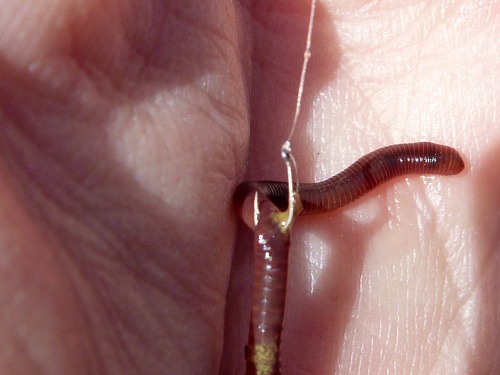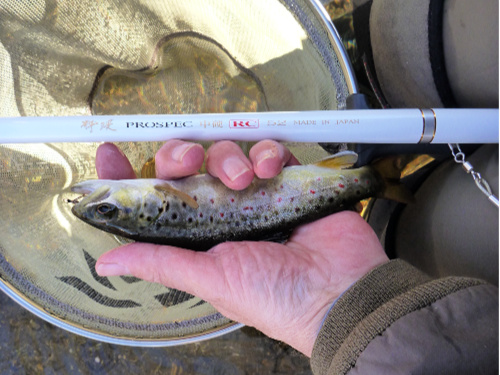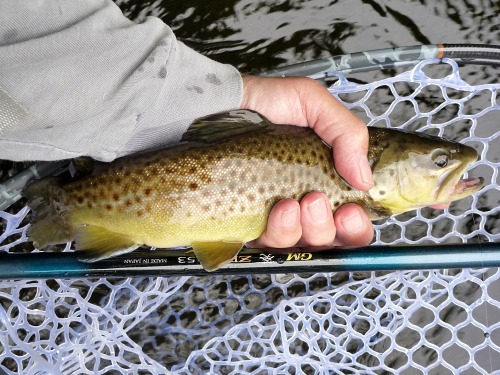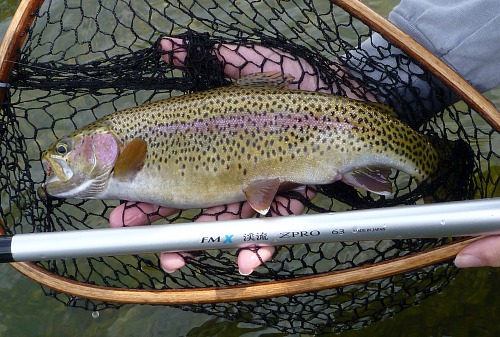Zero Fishing
Let's get one thing straight, right from the get go. Zero Fishing does not mean No Fishing!
Zero fishing is a concept introduced by Daiwa several years ago. At one time they offered a series of Zero keiryu rods. Now they offer only one. Suntech currently offers three rods that I feel would do admirably, the Aoi ZPRO II, the FMX Keiryu ZPRO and the Suikei PROSPEC RC 52 soft (中硬, chuko in Japanese).
Although I had initially thought that the "Zero" fishing concept was to have zero tension on the line, it is actually much more than that. Fish will in fact spit out a baited hook if they feel tension on the line. (I have proven that myself when fishing with a particularly stiff rod.)
The Zero fishing concept, though, is to add as little as possible (as close to "zero" as possible) to a natural nymph, or egg or worm drifting with the current. The hooks are small and weigh almost nothing. The line is as thin as possible to produce the most natural drift and to minimize resistance after the fish takes the bait. It is the same concept as fly fishermen going to lighter and lighter tippets when midge fishing to avoid drag from micro currents.
The upper three or four sections of a "Zero" rod are very soft so the fish does not feel tension when taking the bait. The hook is a small fine wire hook. The tippet is as light as the rod can handle, which for some rods is thinner than Varivas 10X, which is .064mm (.0025") and 1.1# test. The split shot is only as large as absolutely necessary to get the bait to the right depth. It is an entire system (hook, line and sinker - and rod) all working in concert to allow the most natural drift and to not alert the fish - even after it has taken the bait.
The Suntech Suikei PROSPEC RC 52 Soft (中硬, chuko in Japanese) is one of the Japanese keiryu rods designed
specifically for fishing with extremely light lines (Zero Fishing). The rods are rated
for lines ranging from Japanese line size .3 down to .1 - which are
equivalent to Varivas 8X tippet down to even thinner than Varivas 10X
tippet. The rod also come in a 62 and 72 length.
With that set up, the drift you can get is as natural as it is possible to achieve (and still have a hook and line attached). It is extremely effective. One bit of advice, though: with such a small weight you will need to cut the tag ends of your yarn markers quite short to minimize wind resistance. Otherwise they will impede your cast.
 Size 30 hook and red wiggler
Size 30 hook and red wigglerThe
worm in the photo above is a red wiggler, and is about an inch and half
long - maybe two inches when fully stretched out. The hook is a size 30
Varivas 2300 midge hook. The tippet is 10X Varivas. With a soft rod, and
a smooth, gentle cast, you can easily cast a worm hooked this way and
it will not come off the hook. I found it easiest to hold the hook in a
pair of Dr. Slick Spring Creek Clamps, which have very pointy jaws, and
to quickly run the hook in and back out so the point remains exposed.
A few years ago now, I tried the ultimate - or at least as close to the ultimate as I could achieve with the equipment I had. I fished a Suntch FMX Keiryu ZPRO 53 with 10X tippet and Tiemco size 32 hooks (which are no longer available). As I recall, I lost all my size 32 hooks to broken tippets. One on a hook set (10X tippet will cure you of overly aggressive hook sets) and two when the 6 or 7 inch fish slipped out of my hand as I was trying to photograph them. The 10X tippet when fished with a long, soft rod is plenty strong enough to land 8" fish, but an even smaller fish will break 10X if it flips out of your hand and the tippet pulls tight before the fish hits the water.
The trip was intended to be a test of the zero fishing approach so I intentionally used the smallest readily available hook and thinnest readily available tippet. For general use, I would scale up both a bit - perhaps to a size 20 hook and tippet of 8X to no more than 6X, depending on the size of the fish. However, I would still recommend a small worm! In many cases, I have caught fish when I only had about half the worm left. Remember, trout are used to eating small things! Plus, you really do want the bait to be small enough that the hook is definitely in the mouth when the fish grabs the bait.
The Zero fishing style is extremely effective, as the bait achieves as close to a perfectly natural drift as you can get and still have it attached to a line and rod.
The Suntech ZPRO II and FMX Keiryu ZPRO are quite a bit more versatile than the Suntech Suikei PROSPEC 52. Although both can still handle the delicate 10X tippet, both are rated for tippets up to 6X. While 6X tippet is a bit thicker, it will still produce excellent drifts and can handle much larger fish. The PROSPEC rods are limited to tippet no stronger than 8X.
TenkaraBum Home > Zero Fishing
“The bitterness of poor quality remains long after the sweetness of low price is forgotten” - Benjamin Franklin
"Be sure in casting, that your fly fall first into the water, for if the line fall first, it scares or frightens the fish..." -
Col. Robert Venables 1662
As age slows my pace, I will become more like the heron.
Warning:
The hooks are sharp.
The coffee's hot.
The fish are slippery when wet.
Beware of the Dogma
What's in stock?
Suntech Tenkarakyo 40F Tenkara Rods
Suntech Kurenai II AR39F
Seiryu Rods
Coming Soon
Latest Pages
If you enjoy spin fishing or baitcasting please visit my sister site Finesse-Fishing.com.





